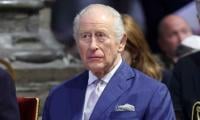Quaid-e-Azam had vowed to make Pakistan a welfare state where every citizen would have the freedom to play his or her role in the national development. Even though the country is now 70 years old, Pakistan still faces hurdles in its way to progress.
On the other hand, various countries that were liberated after Pakistan, have successfully transformed themselves into developed countries. China and Malaysia are two examples. My visits to different countries on a regular basis allowed me observe other nations’ economic development and I can confidently say that other states were able to progress because of the commitment of their leadership and their national vision. While many other states also combat anti-state elements and face natural disasters, unlike us, they do not demand bloodshed and violence from their citizens for development.
Every developed country was once under-developed. While starting its journey towards progress and development, every nation looked to an economically strong country as a role model. The rise of China is the result of hard work and continuous struggle. The primary objective of the Chinese government under the leadership of Chairman Mao Zedong was economy restoration since the country was reeling under the effects of the Second World War. The Chinese leadership adopted the economic model of the Soviet Union in its first five-year plan. The model aimed to achieve socialisation with focus on state ownership, large collective units in agriculture and centralised economic planning. Some of the objectives included: focus on industrialisation, improvement of living standards and creation of jobs.
Timely review of a policy is also essential in national development planning. The Chinese government reviewed the industry-based Soviet model once they were convinced that the required results could not be delivered. A socio-economic policy – The Great Leap Forward – was initiated by the Chinese government from 1958 to 1960 to transform the country through rapid industrialisation and collectivisation. However, this policy also failed and caused the Great Chinese Famine in which as many as 15 million people lost their lives.
Learning lessons from the critical situation, the Chinese government announced ‘Agriculture First’ in 1961 to revive economic planning. Agriculture became the government’s first priority, followed by light industry and heavy industry. During this era, China also fought the Sino-Indian War in 1962 on the issue of Tibet. Despite the fact that China had managed to capture a large area, its government declared a ceasefire and withdrew its troops from the disputed area.
From 1966 until 1976, the Cultural Revolution, another socio-political movement, began. Although, the movement aimed to preserve the country’s true ideological identity, it also caused deleterious economic and social effects.
After the death of Mao Zedong, another revolutionary and paramount leader, Deng Xiaoping, came to power and led the country through far-reaching market-economy reforms. A number of socio-economic reforms were carried out during his era to make China an active part of the international community. Promotion of modern research and quality education were his top priorities. Different steps for foreign trade were also taken and exchanges of students and professionals with the foreign world were initiated. Modern machinery and technology – essential for national development – were also imported.
Today, no one can deny the fact that China is becoming a global super power and a role model for other countries under the dynamic leadership of President Xi Jinping. Many experts see that China is ready to catch up or even surpass the US in the near future. Chinese government’s non-involvement in international conflicts also reflects its commitment to ensure world peace.
Despite military advancements, the Chinese government decided to opt for a ceasefire in 1962 because it kept the welfare of its citizens in view. China also keeps cordial trade relations with all the nations of the world, including its rivals like India, Taiwan and Japan. It has declared Taiwan a ‘rebel province’ but has never cut off relations with it. Special permits are being issued to people residing in Taiwan for trade and visits. The positive role of China can also be seen in the UN General Assembly on the issue of Syria.
The progress of any country, in my view, is the result of political commitment of its leadership, national vision and tireless efforts by the nation. This needs to be done despite the presence of anti-state elements and occurrence of natural disasters.
The purpose of highlighting the hardship of China is to demonstrate that crises are a part of life and brave nations make policies to tackle them. Instead of making statements, our leadership – political and military – must come together to chalk out policies that will help our country become an ‘Asian tiger’. Following the success story of China, we must cooperate with each other to design and implement national policies, regardless of our political affiliations. An economically stable and strong Pakistan is in the best interests of the entire region.
The writer is a member of the National Assembly and patron-in-chief of the
Pakistan Hindu Council.
Twitter: @RVankwani















